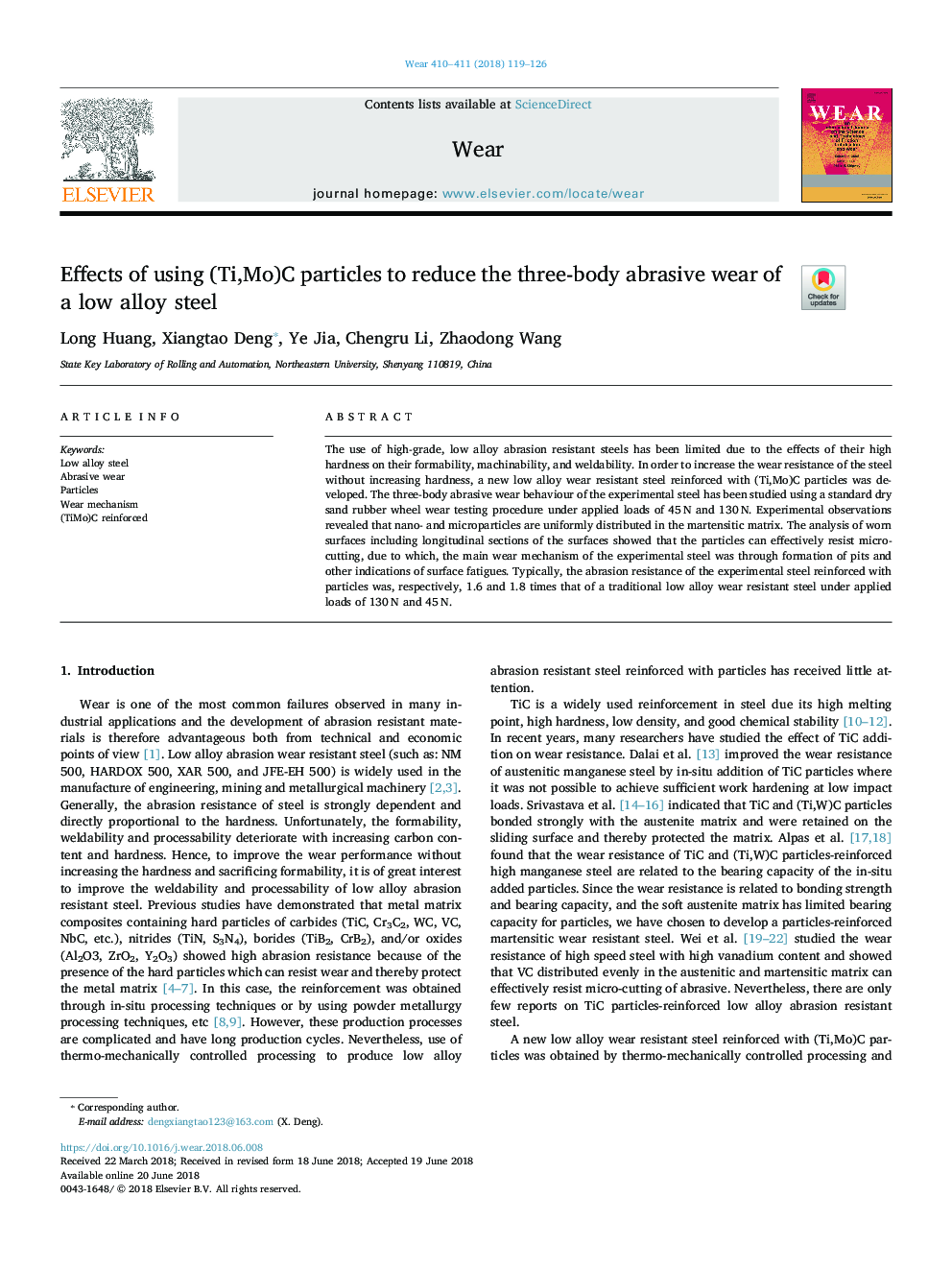| Article ID | Journal | Published Year | Pages | File Type |
|---|---|---|---|---|
| 7003737 | Wear | 2018 | 8 Pages |
Abstract
The use of high-grade, low alloy abrasion resistant steels has been limited due to the effects of their high hardness on their formability, machinability, and weldability. In order to increase the wear resistance of the steel without increasing hardness, a new low alloy wear resistant steel reinforced with (Ti,Mo)C particles was developed. The three-body abrasive wear behaviour of the experimental steel has been studied using a standard dry sand rubber wheel wear testing procedure under applied loads of 45â¯N and 130â¯N. Experimental observations revealed that nano- and microparticles are uniformly distributed in the martensitic matrix. The analysis of worn surfaces including longitudinal sections of the surfaces showed that the particles can effectively resist micro-cutting, due to which, the main wear mechanism of the experimental steel was through formation of pits and other indications of surface fatigues. Typically, the abrasion resistance of the experimental steel reinforced with particles was, respectively, 1.6 and 1.8 times that of a traditional low alloy wear resistant steel under applied loads of 130â¯N and 45â¯N.
Related Topics
Physical Sciences and Engineering
Chemical Engineering
Colloid and Surface Chemistry
Authors
Long Huang, Xiangtao Deng, Ye Jia, Chengru Li, Zhaodong Wang,
